Complete Solutions to Comprehension Type Questions of chapter ROTATIONAL MOTION of Class 11 book with complete answers and questions
| Class 11 | PHYSICS |
| Chapter | ROTATIONAL MOTION |
| DC PANDEY MASTER PROBLEM PACKAGE | Comprehension Type Questions |
| Number Of Questions | 41 |
| Academic Year | 2023-24 |
A rod of length 2 m is kept vertical inside a smooth spherical shell of radius 2m. The rod starts slipping inside the shell . Mass of the rod is 4 kg.
Angular speed of the rod(in rad/s) in the position when it becomes horizontal is
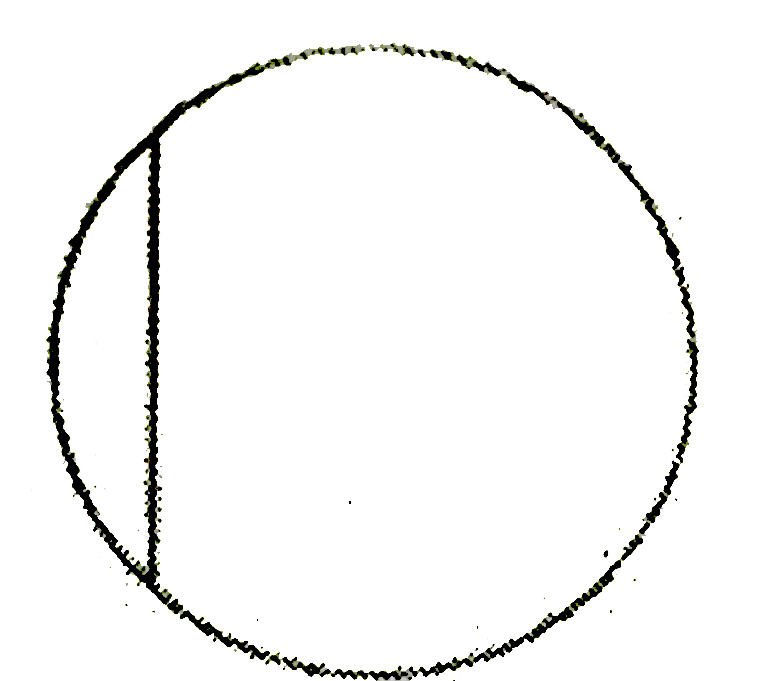
View SolutionA rod of length 2 m is kept vertical inside a smooth spherical shell of radius 2m. The rod starts slipping inside the shell . Mass of the rod is 4 kg.
Velocity of centre of the rod (in m/s) at the instant is approximately
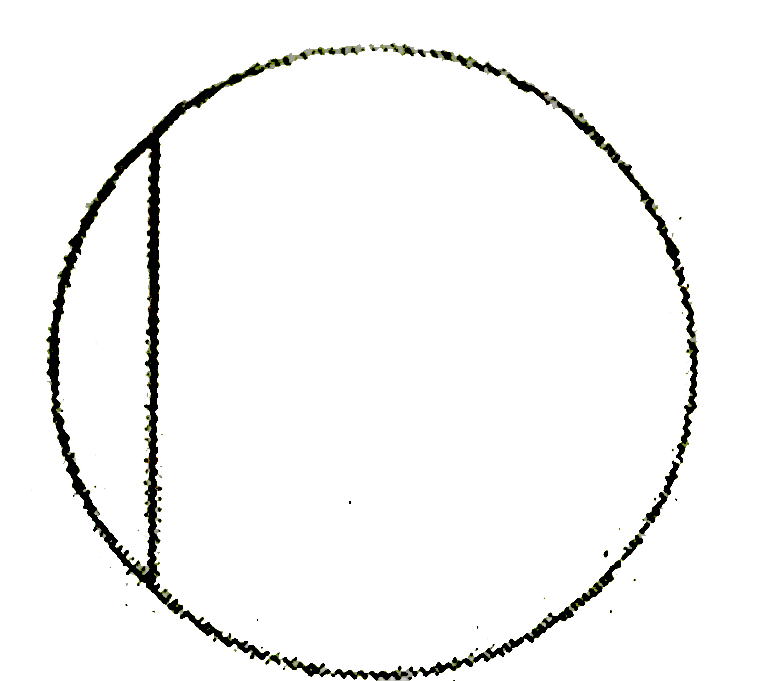
View SolutionA solid sphere is kept over a smooth surface as shown in figure. It is hit by a cute at height h above the centre C.
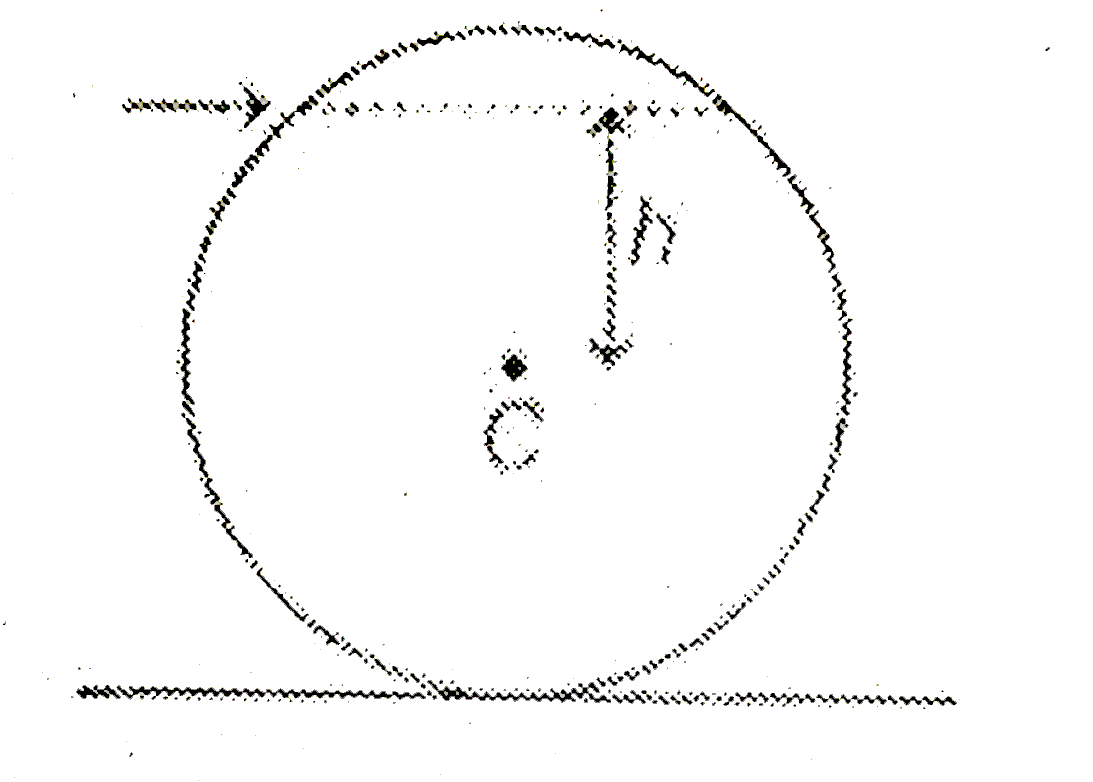
In case 1, `h=(R)/(2)` and in case 1 the sphere acquires a total kinetic energy `k_(1)` and in case 2 total kinetic energy is `k_(2)` . Then,
View SolutionA solid sphere is kept over a smooth surface as shown in figure. It is hit by a cute at height h above the centre C.
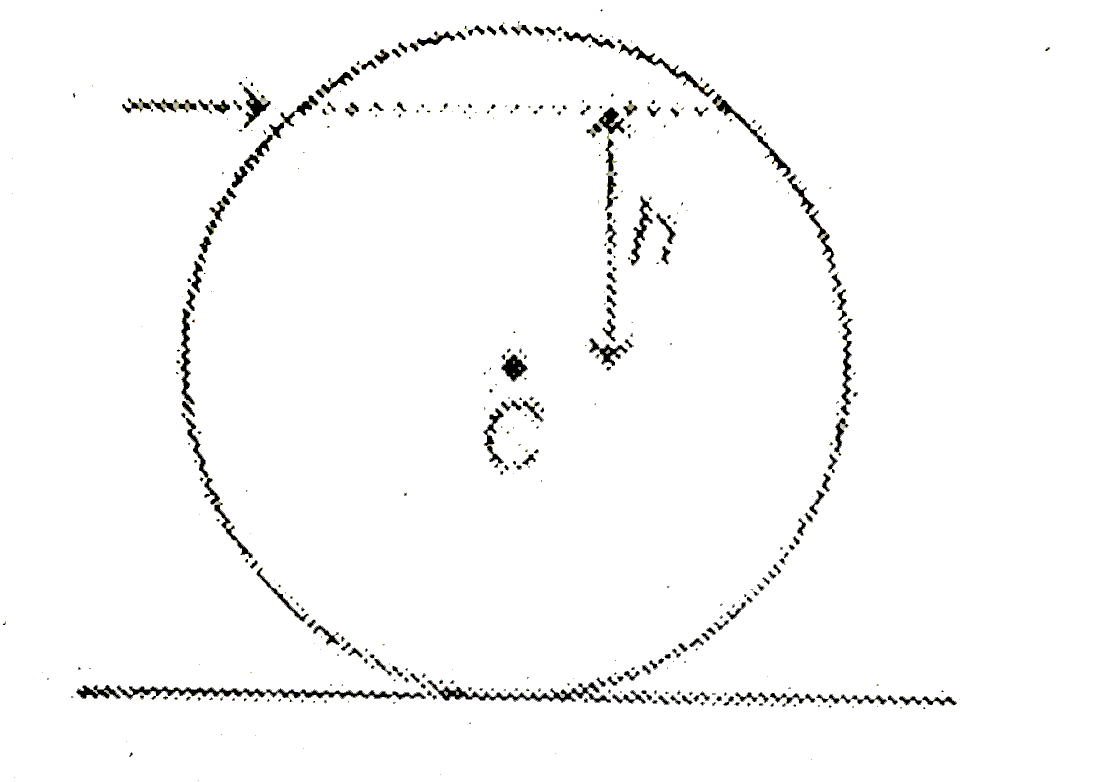
If the surface is rough, then after hitting the sphere, in which case the force of friction is in forward direction.
View SolutionA solid sphere is rolling without slipping on rough ground as shown in figure. If collides elastically with an identical another sphere at rest. There is no friction between the two spheres . Radius of each sphere is R and mass is m.

Linear velocity of first sphere after it again starts rolling without slipping is
View SolutionA solid sphere is rolling without slipping on rough ground as shown in figure. If collides elastically with an identical another sphere at rest. There is no friction between the two spheres . Radius of each sphere is R and mass is m.

What is the net angular impulse imparted to second sphere by the external forces?
View SolutionA small sphere of mass 1 kg is rolling without slipping with linear speed
`v=sqrt((200)/(7) m//s`

It leaves the inclined plane at point C.
Find the linear speed at point C.
View SolutionA small sphere of mass 1 kg is rolling without slipping with linear speed
`v=sqrt((200)/(7) m//s`
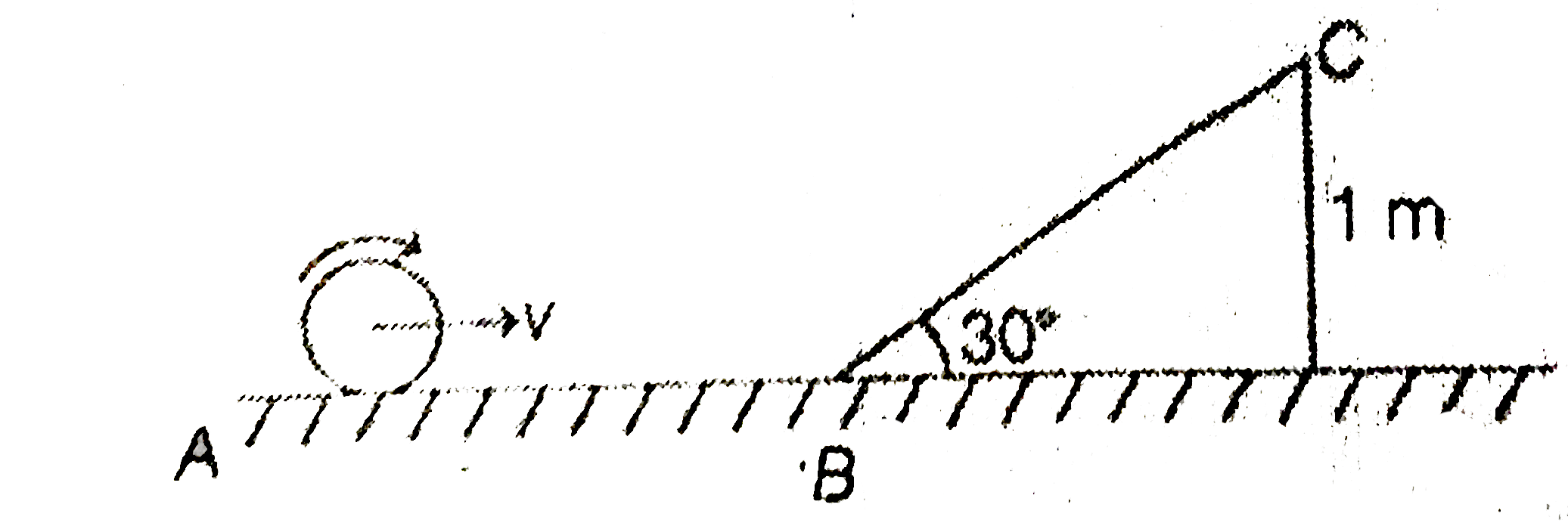
It leaves the inclined plane at point C.
Find ratio of rotational and translational kinetic energy of the sphere when it strikes the ground after leaving from point C.
View SolutionA solid sphere has linear velocity `v_(0)=4` m/s and angular velocity `omega_(0)=9` rad/s as shown. Ground on which it is moving , is smooth . It collides elastically with a rough wall of coefficient of friction `mu` . Radius of the sphere is 1m and mass is 2 kg .
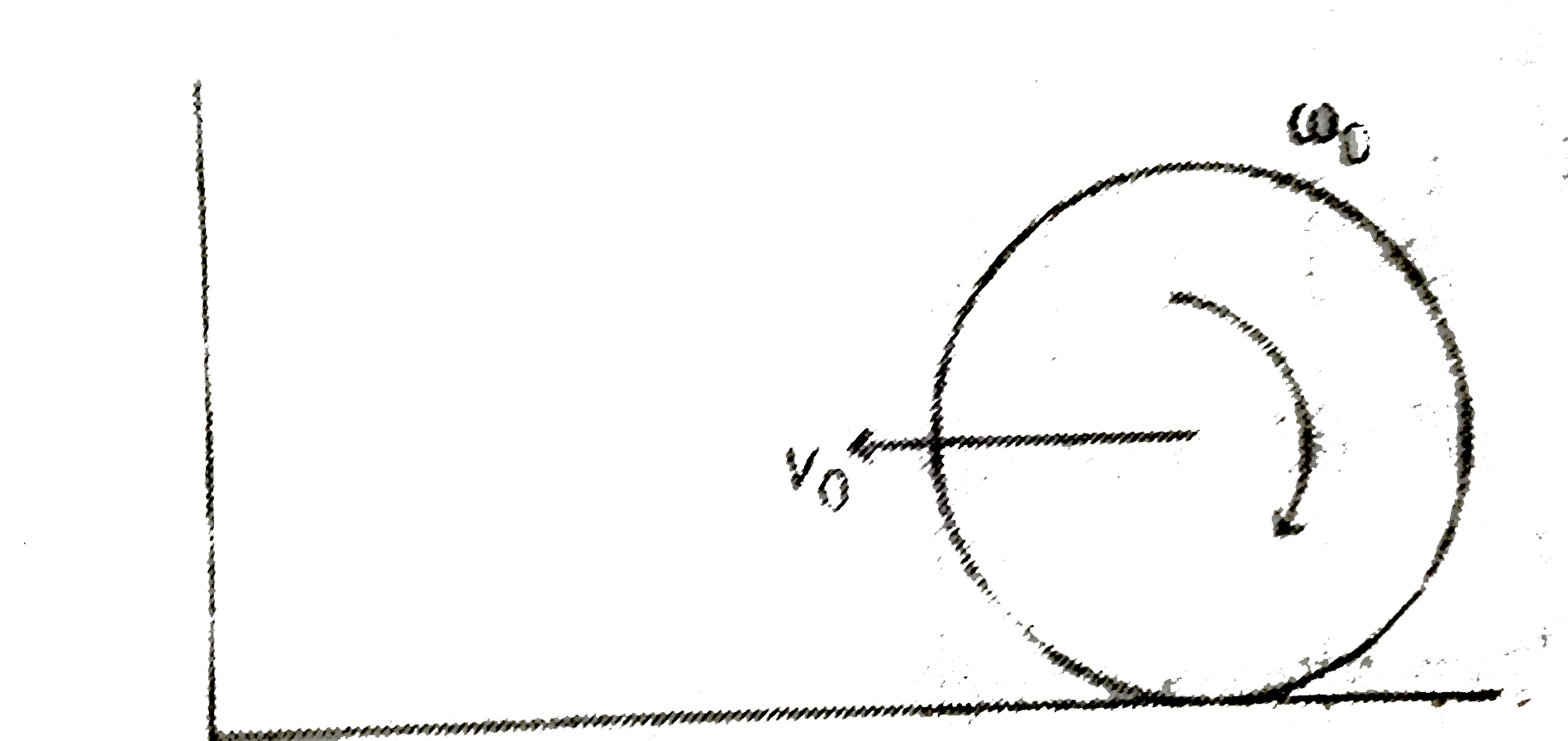
If the sphere after colliding with the wall rolls without slipping on opposite direction, then coefdicient of friction `mu` is
View SolutionA solid sphere has linear velocity `v_(0)=4` m/s and angular velocity `omega_(0)=9` rad/s as shown. Ground on which it is moving , is smooth . It collides elastically with a rough wall of coefficient of friction `mu` . Radius of the sphere is 1m and mass is 2 kg .

What is net linear impulse imparted by the wall on the sphere during impact ?
View SolutionA rod AB of length 2 m and mass 2 kg is lying on a smooth horizontal x-y plane with its centre at origin O as shown in figure. An impulse J of magnitude 10 N-s is applied perpendicular to AB at A.
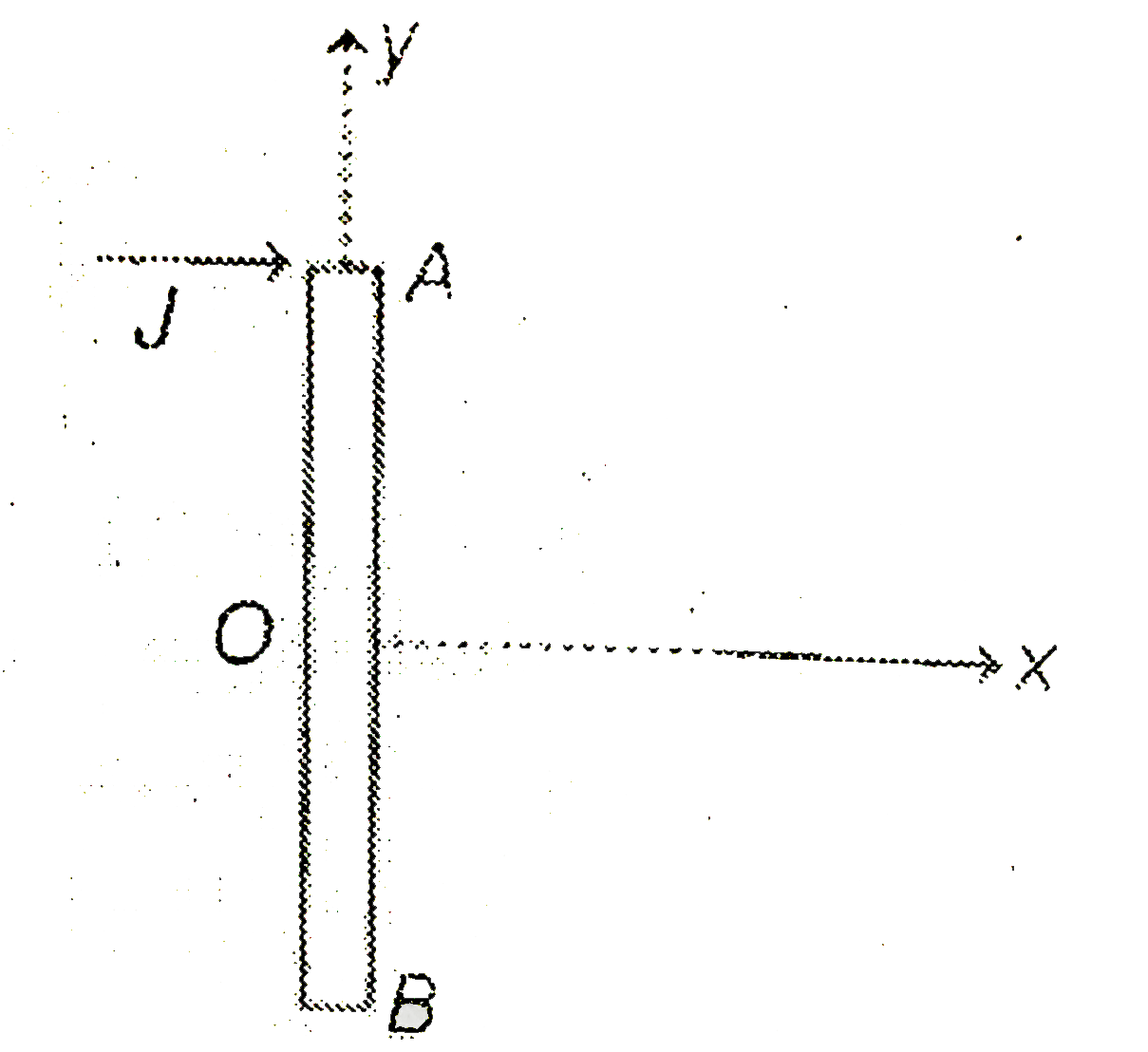
The distance of point P from centre of the rod which is at rest just after impact is
View SolutionA rod AB of length 2 m and mass 2 kg is lying on a smooth horizontal x-y plane with its centre at origin O as shown in figure. An impulse J of magnitude 10 N-s is applied perpendicular to AB at A.

Co-ordinates of point A of the rod after time t`=(pi)/(45)` s will be
View SolutionLength AB in the figure shown in 5 m. The body is released from A. Friction is sufficient for pure rolling to take place.
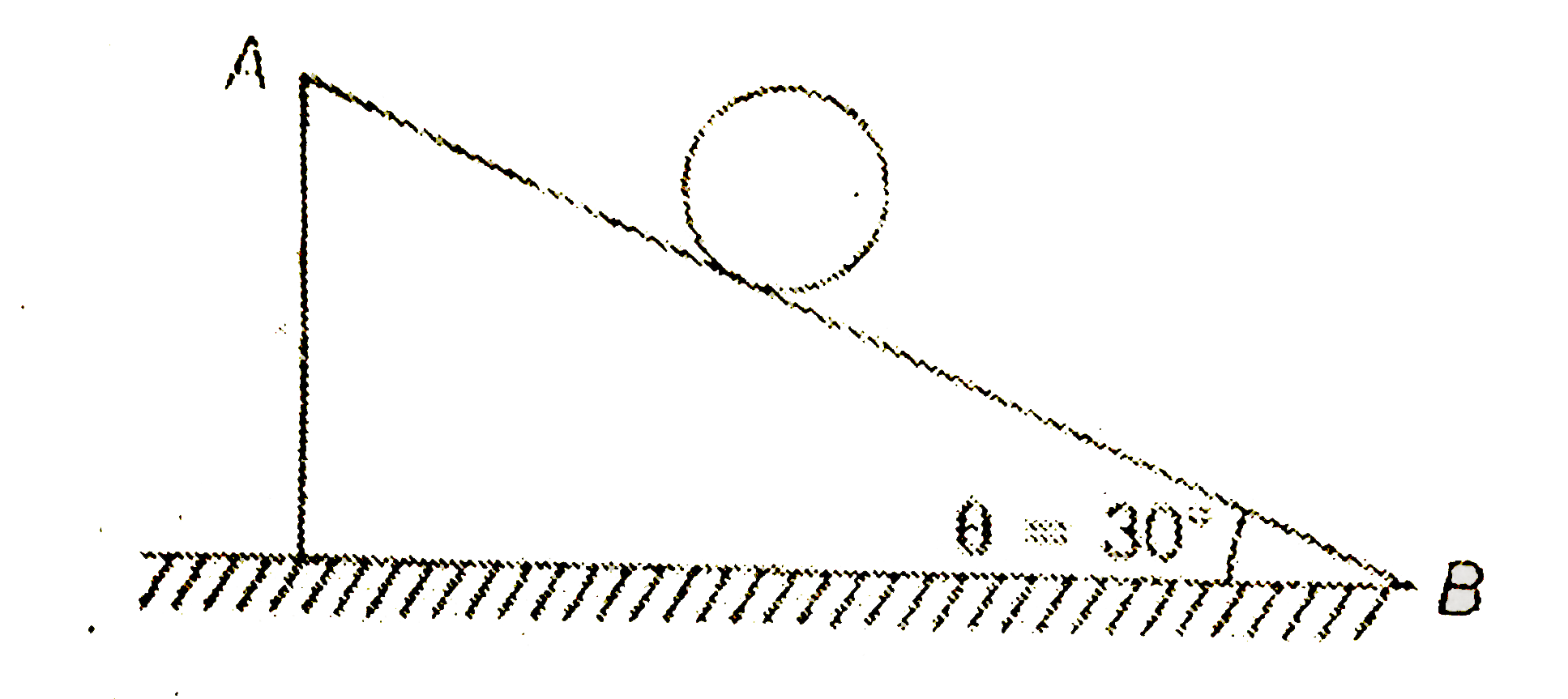
The maximum time which anybody (which can roll) can take to reach the bottom is
View SolutionLength AB in the figure shown in 5 m. The body is released from A. Friction is sufficient for pure rolling to take place.
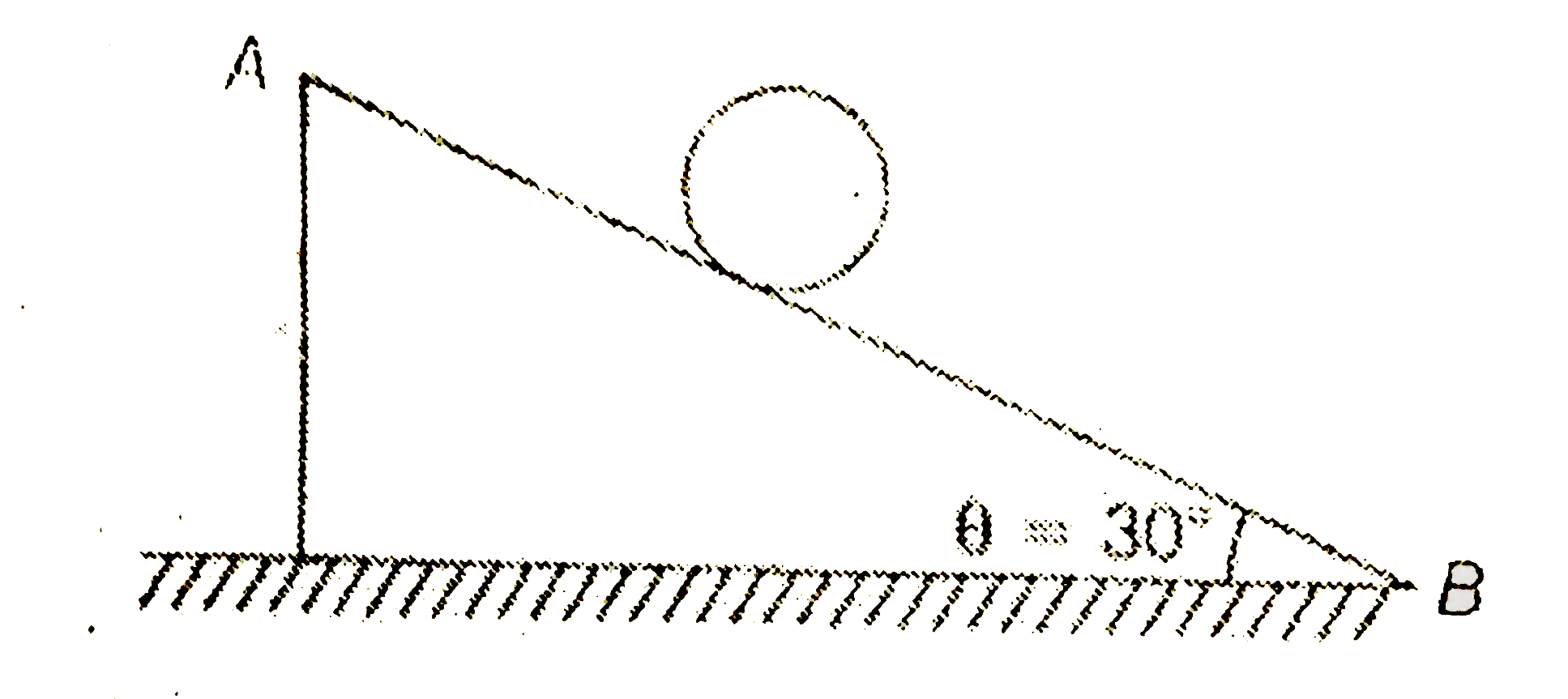
In the above case suppose we have four bodies ring, disc, solid sphere and hollow sphere. The angle `theta` is now gradually increased. Which body will start slipping very fast. All the bodies have same mass and radius. Coefficient of friction is also same ?
View SolutionAn L shaped frame is free to rotate in a vertical plane about a horizontal axis passing through a smooth hinge O. Each side of the frame has a length L and mass m. Frame is let to fall with one side horizontal and the other vertical.
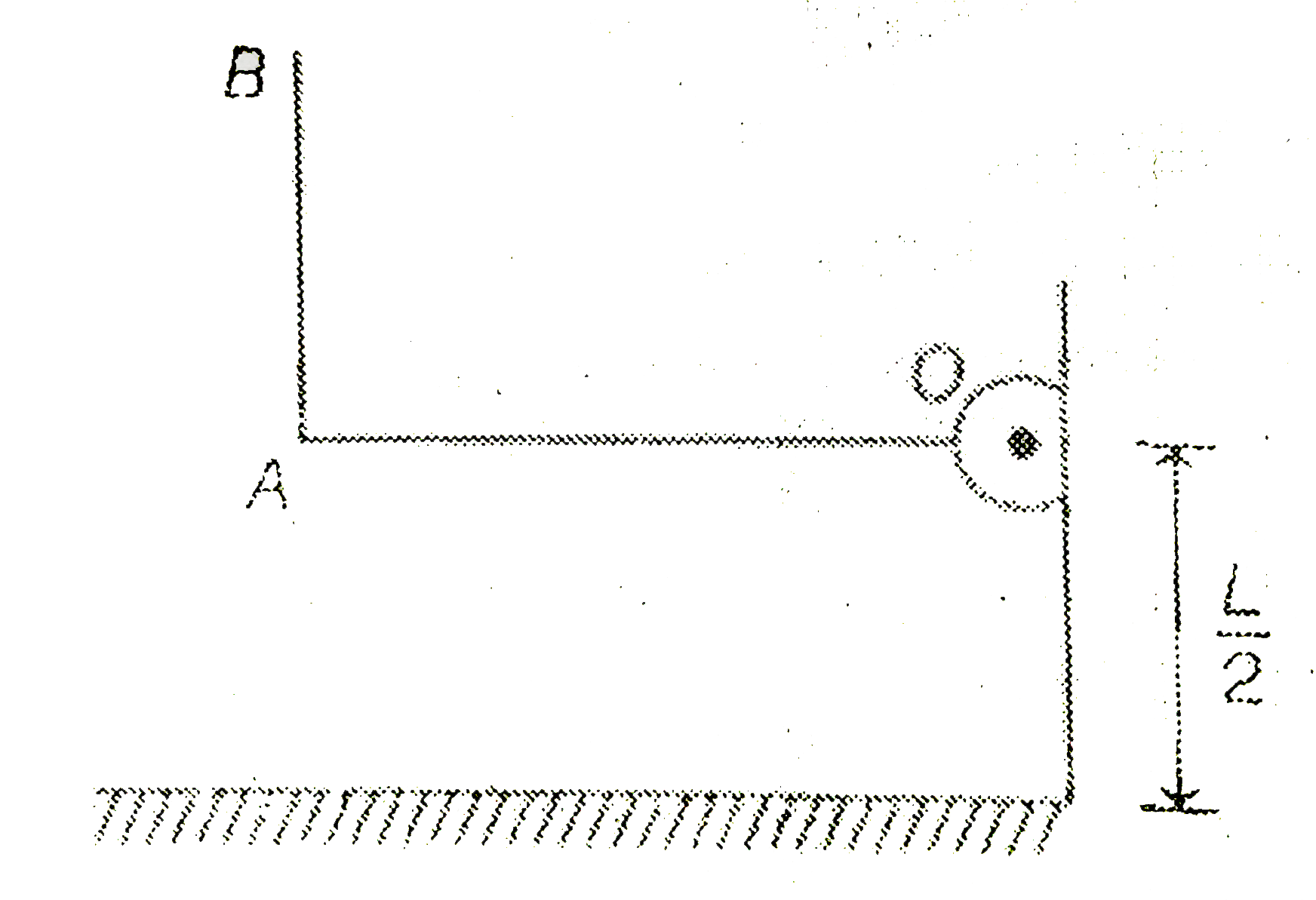
Angular acceleration of the frame just after it is allowed to fall is
View SolutionAn L shaped frame is free to rotate in a vertical plane about a horizontal axis passing through a smooth hinge O. Each side of the frame has a length L and mass m. Frame is let to fall with one side horizontal and the other vertical.

With what speed the end A will strike the ground ?
View SolutionMoment of inertia of a straight wire about an axis perpendicular to the wire passing through one of its end is I.
This wire is now framed into a circle (a ring) of single turn. The moment of inertia of this ring about an axis passing through centre and perpendicular to its plane would be
View SolutionMoment of inertia of a straight wire about an axis perpendicular to the wire passing through one of its end is I.
Now the same wire is bent into a ring of two turns , then the moment of inertia would be
View SolutionIn the given figure `F=10N, R=1m`, mass of the body is `2kg` and moment of inertia of the body about an axis passing through `O` and perpendicular to the plane of the body is `4kgm^(2)`. `O` is the centre of mass of the body.
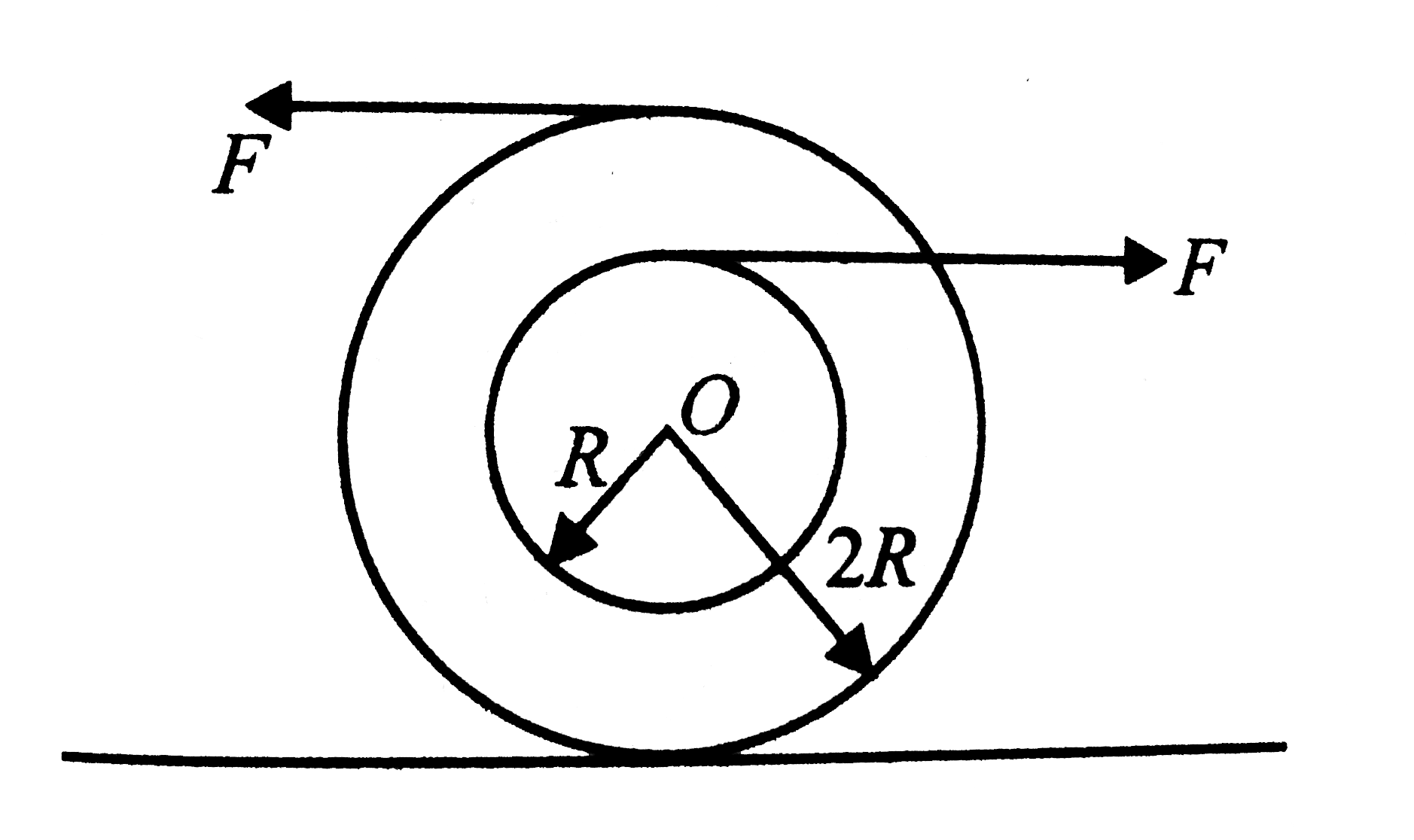
If the ground is smooth, what is the total kinetic energy of the body after `2s`?
View SolutionIn the given figure `F=10N, R=1m`, mass of the body is `2kg` and moment of inertia of the body about an axis passing through `O` and perpendicular to the plane of the body is `4kgm^(2)`. `O` is the centre of mass of the body.
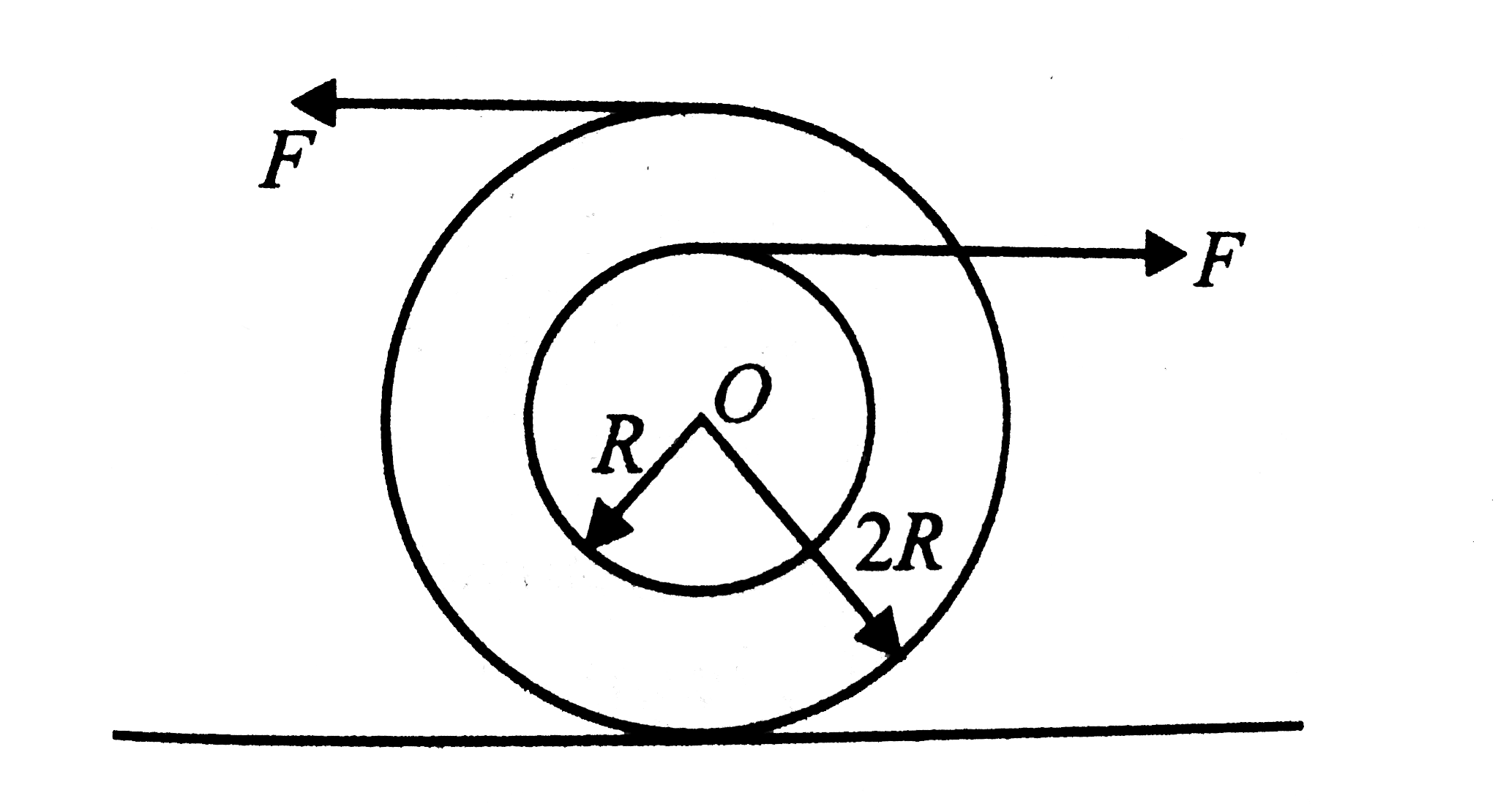
If the ground is sufficiently rough to ensure rolling, what is the kinetic energy of the body now in the given time interval of `2s`?
View SolutionA rod of mass m and length l in placed on a smooth table. An another particle of same mass m strikes the rod with velocity `v_(0)` in a direction perpendicular to the rod at distance `x( lt l//2)` from its centre . Particle sticks to the end. Let `omega` be the angular speed of system after collision , then
As x is increased from 0 to l/2 , the angular speed `omega`.
View SolutionA rod of mass m and length l in placed on a smooth table. An another particle of same mass m strikes the rod with velocity `v_(0)` in a direction perpendicular to the rod at distance `x( lt l//2)` from its centre . Particle sticks to the end. Let `omega` be the angular speed of system after collision , then
Find the maximum possible value of impulse (by varying x) that can be imparted to the particle during collision. Particle still sticks to the rod.
View SolutionA disc of mass m and radius R is placed over a plank of same mass m. There is sufficient friction between disc and plank to prevent slipping. A force F is applied at the centre of the disc.
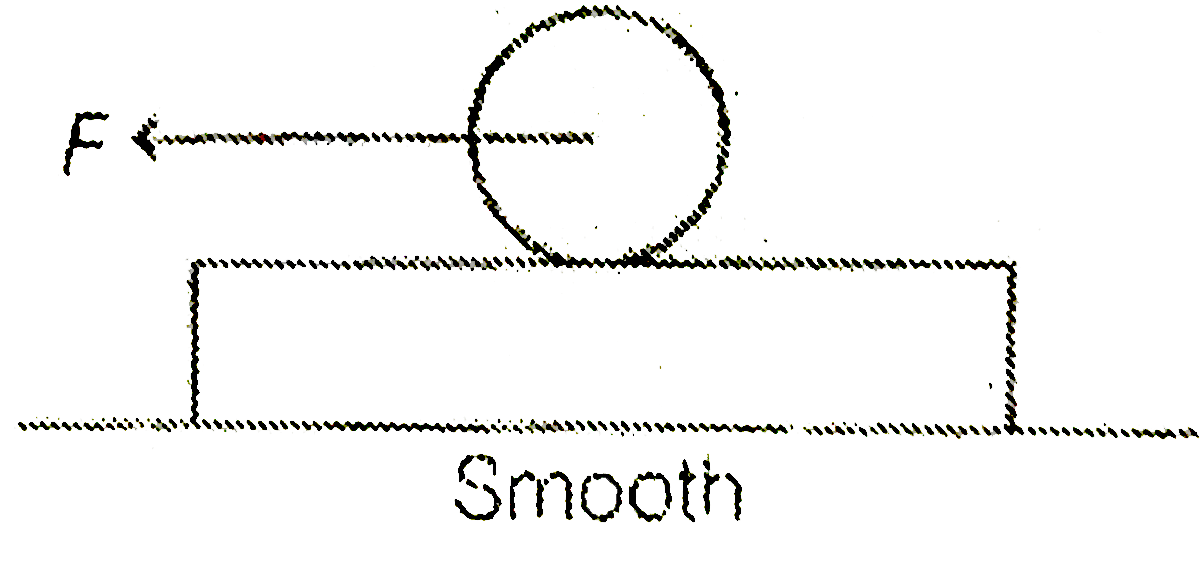
Acceleration of the plank is
View SolutionA disc of mass m and radius R is placed over a plank of same mass m. There is sufficient friction between disc and plank to prevent slipping. A force F is applied at the centre of the disc.

Force of friction between the disc and the plank is
View SolutionTwo rod 1 and 2 are released from rest as shown in figure . Given, `l_(1)=4l,m_(1)=2m,l_(2)=2l "and "m_(2)=m.` There is no friction between the two rods . If `alpha` be the angular acceleration of rod 1 just after the rods are released . Then,
What is the normal reaction between the two rods at this instant ?

View SolutionTwo rod 1 and 2 are released from rest as shown in figure . Given, `l_(1)=4l,m_(1)=2m,l_(2)=2l "and "m_(2)=m.` There is no friction between the two rods . If `alpha` be the angular acceleration of rod 1 just after the rods are released . Then,
What is the horizontal force on rod 1 by hinge. A at this instant ?
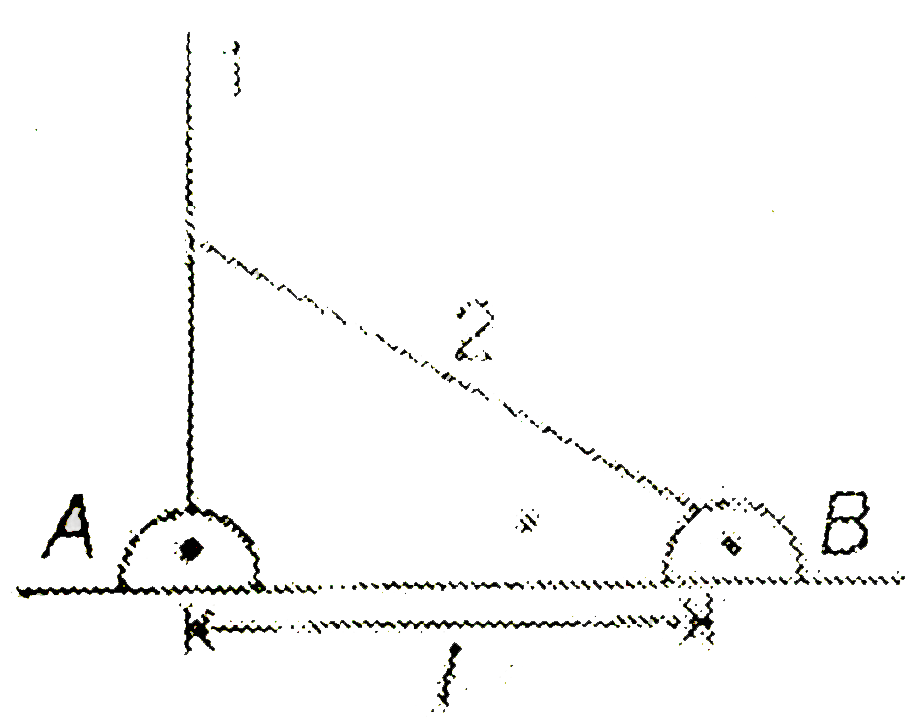
View SolutionTwo rod 1 and 2 are released from rest as shown in figure . Given, `l_(1)=4l,m_(1)=2m,l_(2)=2l "and "m_(2)=m.` There is no friction between the two rods . If `alpha` be the angular acceleration of rod 1 just after the rods are released . Then,
What is the initial angular acceleration of rod 2 in terms of the given parameters in the question ?

View SolutionThree massless rods are fixed to form a right angled triangular frame such that AB=BC=1 . Two identical small objects of mass m are fixed at A and C . The frame is hinged about B such that the frame can rotate in vertical plane about an horizontal axis without friction. Initially AB is vertical and BC is horizontal and the system is released from rest.

The maximum shift of centre of mass of two mass system from its initial position is
View SolutionThree massless rods are fixed to form a right angled triangular frame such that AB=BC=1 . Two identical small objects of mass m are fixed at A and C . The frame is hinged about B such that the frame can rotate in vertical plane about an horizontal axis without friction. Initially AB is vertical and BC is horizontal and the system is released from rest.
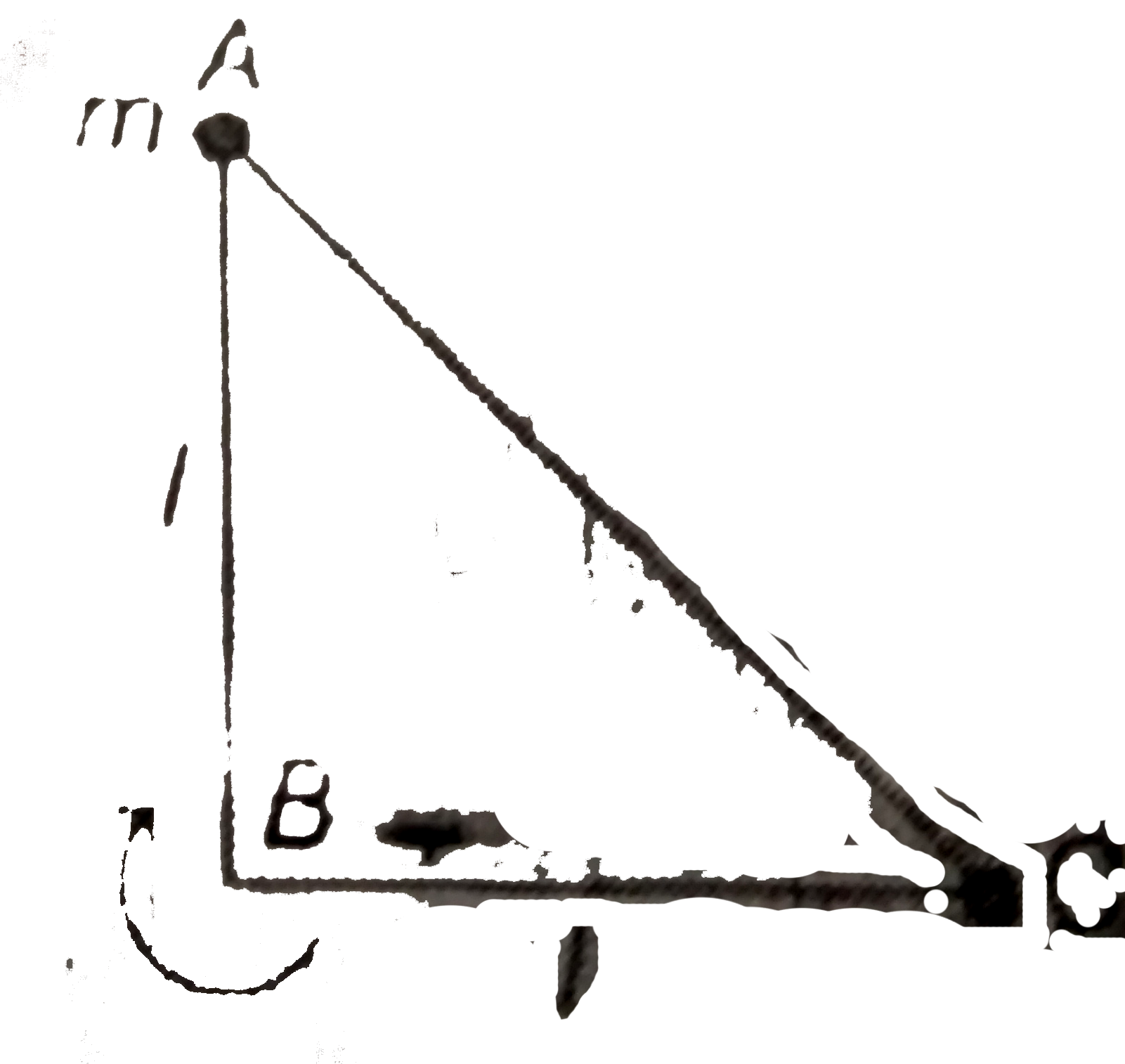
The magnitude of acceleration of mass A when the rod AC becomes horizontal is
View SolutionThree massless rods are fixed to form a right angled triangular frame such that AB=BC=1 . Two identical small objects of mass m are fixed at A and C . The frame is hinged about B such that the frame can rotate in vertical plane about an horizontal axis without friction. Initially AB is vertical and BC is horizontal and the system is released from rest.
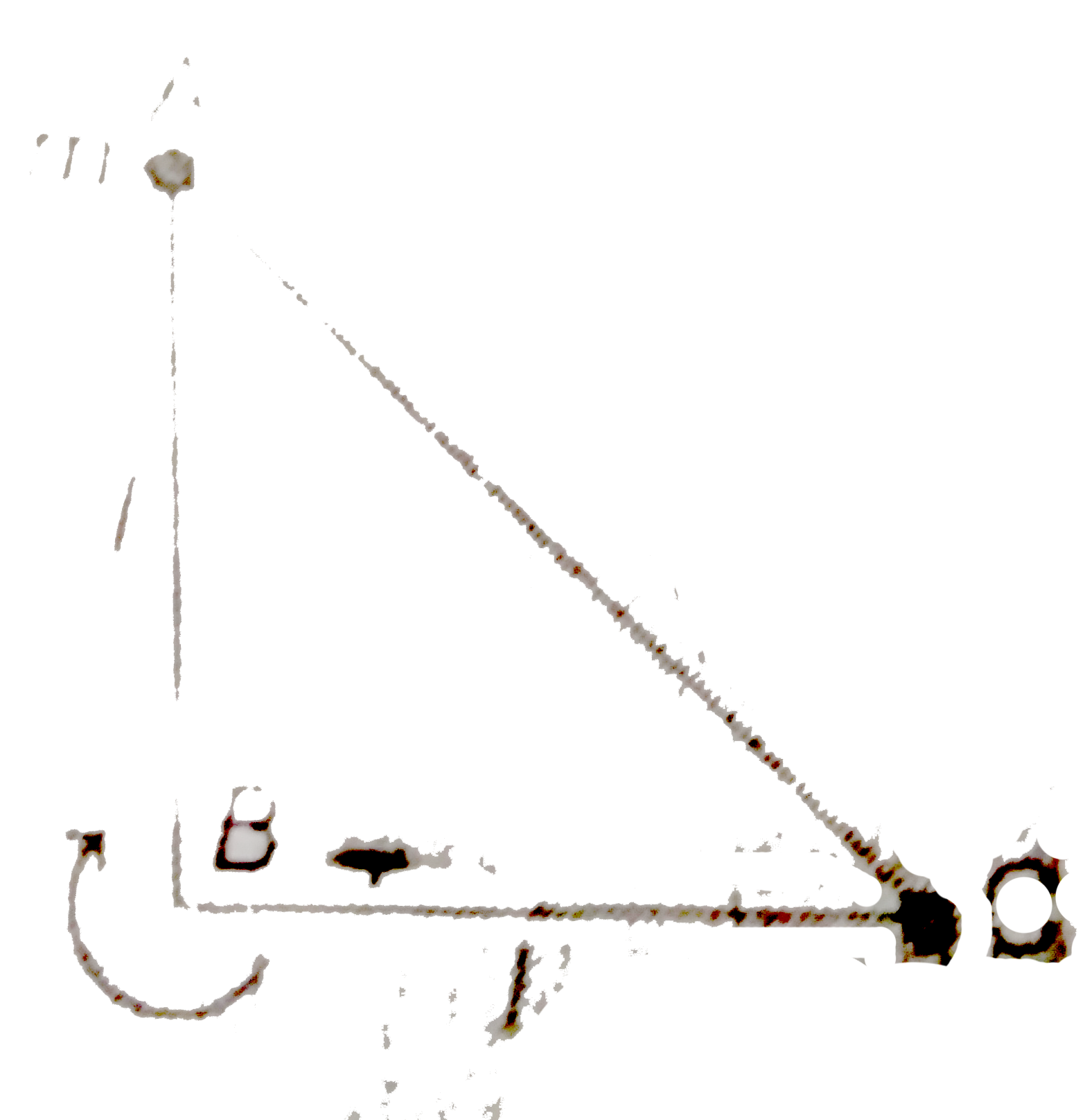
Tension in the rod AC when it (rod AC) becomes horizontal is
View SolutionA uniform disc of mass M and radius R initially stands vertically on the right end of a horizontal plank of mass M and length L, as shown,

The plank rests on a smooth horizontal floor and friction between disc and plank is sufficiently high such that disc rolls on plank without slipping . The plank is pulled to right with a constant horizontal force of magnitude F.
The magnitude of acceleration of plank is
View SolutionA uniform disc of mass M and radius R initially stands vertically on the right end of a horizontal plank of mass M and length L, as shown,

The plank rests on a smooth horizontal floor and friction between disc and plank is sufficiently high such that disc rolls on plank without slipping . The plank is pulled to right with a constant horizontal force of magnitude F.
The magnitude of angular acceleration of the disc is
View SolutionA uniform disc of mass M and radius R initially stands vertically on the right end of a horizontal plank of mass M and length L, as shown,
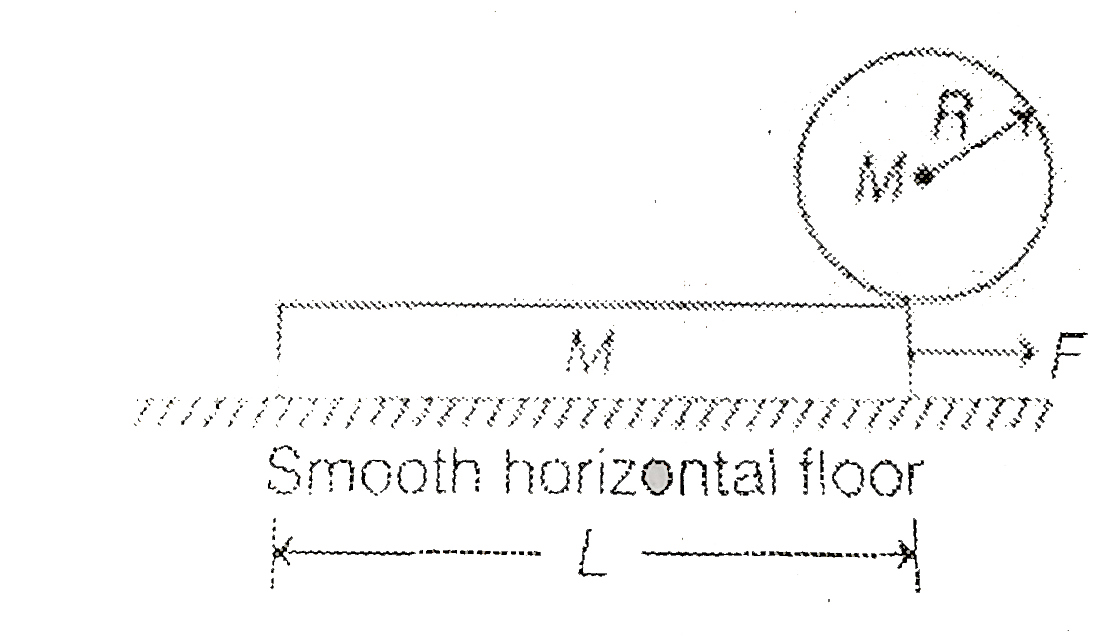
The plank rests on a smooth horizontal floor and friction between disc and plank is sufficiently high such that disc rolls on plank without slipping . The plank is pulled to right with a constant horizontal force of magnitude F.
The distance travelled by centre of disc from its initial position till the left end of plank comes vertically below the centre of disc is
View SolutionAn engineer is designing a conveyor system for loading lay bales into a wagon. Each bale is 0.25 m high, and 0.80 m long (the dimension perpendicular to the plane of the figure), with mass 30.0 kg. The centre of gravity of each bale is at its geometrical centre. The coefficient of static friction between a bal and the conveyor belt is 0.60, and the belt moves with constant speed. The angle `beta` of the conveyor is slowly increased. At some critical angle a bale will tip (if it doesn't slip first), and at some different critical it will slip (if it doesn't tip first).
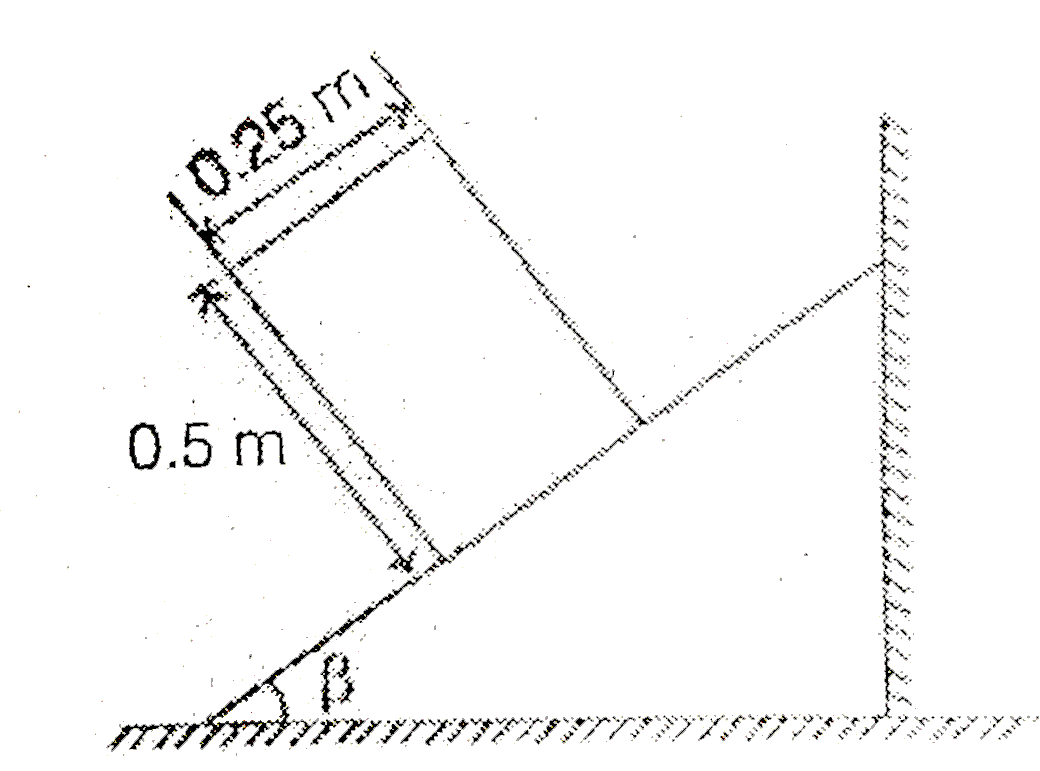
Find the first critical angle (In the same conditions ) at which it tips.
View SolutionAn engineer is designing a conveyor system for loading lay bales into a wagon. Each bale is 0.25 m high, and 0.80 m long (the dimension perpendicular to the plane of the figure), with mass 30.0 kg. The centre of gravity of each bale is at its geometrical centre. The coefficient of static friction between a bal and the conveyor belt is 0.60, and the belt moves with constant speed. The angle `beta` of the conveyor is slowly increased. At some critical angle a bale will tip (if it doesn't slip first), and at some different critical it will slip (if it doesn't tip first).

Find the second critical angle (in the same conditions ) at which it slips.
View SolutionAn engineer is designing a conveyor system for loading lay bales into a wagon. Each bale is 0.25 m high, and 0.80 m long (the dimension perpendicular to the plane of the figure), with mass 30.0 kg. The centre of gravity of each bale is at its geometrical centre. The coefficient of static friction between a bal and the conveyor belt is 0.60, and the belt moves with constant speed. The angle `beta` of the conveyor is slowly increased. At some critical angle a bale will tip (if it doesn't slip first), and at some different critical it will slip (if it doesn't tip first).
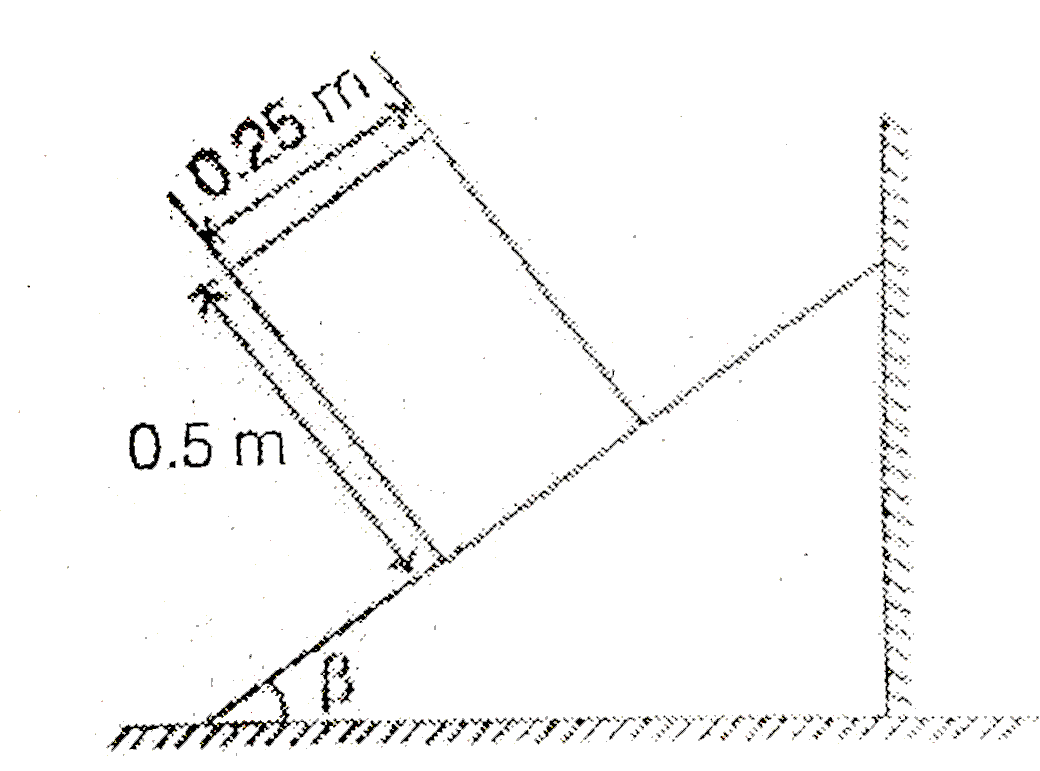
Which statement is correct ?
View SolutionIn the figure `S_(1)` and `S_(2)` are two light springs of stiffness k and 4k respectively. When springs are in relaxed state, seperation between their free ends is `2x_(0)` . A uniform solid cylinder of mass m and radius R`( lt x_(0))` is placed exactly midway between the free ends of the springs with its axis horizontal and perpendicular to the springs . Now consider the two cases separately.
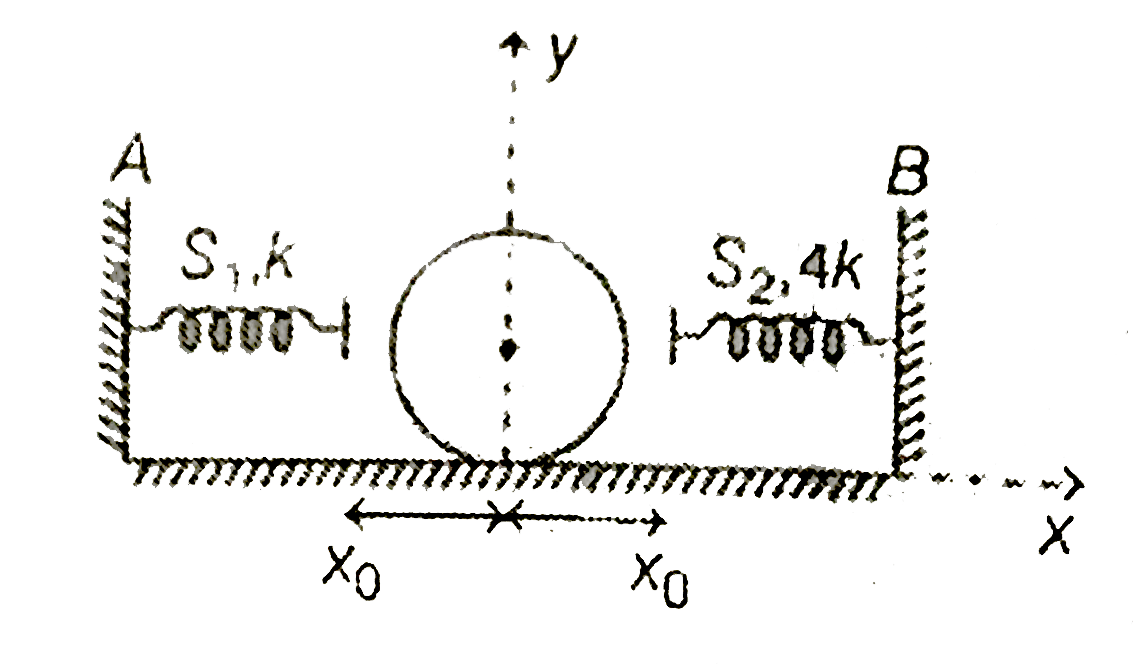
Case I : The cylinder is imparted speed `v_(0)` towards left. When the cylinder comes to rest momentarily the co-ordinates of its centre are either (`-x_(1), R)` or `(x_(2),R)` .
Case II: The Cylinder is imparted speed `v_(0)` toward left and angular speed `omega^(0)` in clockwise sense simultaneously . At the time of maximum compression in the springs the co-ordinates of centre of the cylinder are either `(-x_(3),R) " or "(x_(4),R)` Now answer the following questions assuming that friction is absent every where.
Choose the correct option
View SolutionIn the figure `S_(1)` and `S_(2)` are two light springs of stiffness k and 4k respectively. When springs are in relaxed state, seperation between their free ends is `2x_(0)` . A uniform solid cylinder of mass m and radius R`( lt x_(0))` is placed exactly midway between the free ends of the springs with its axis horizontal and perpendicular to the springs . Now consider the two cases separately.
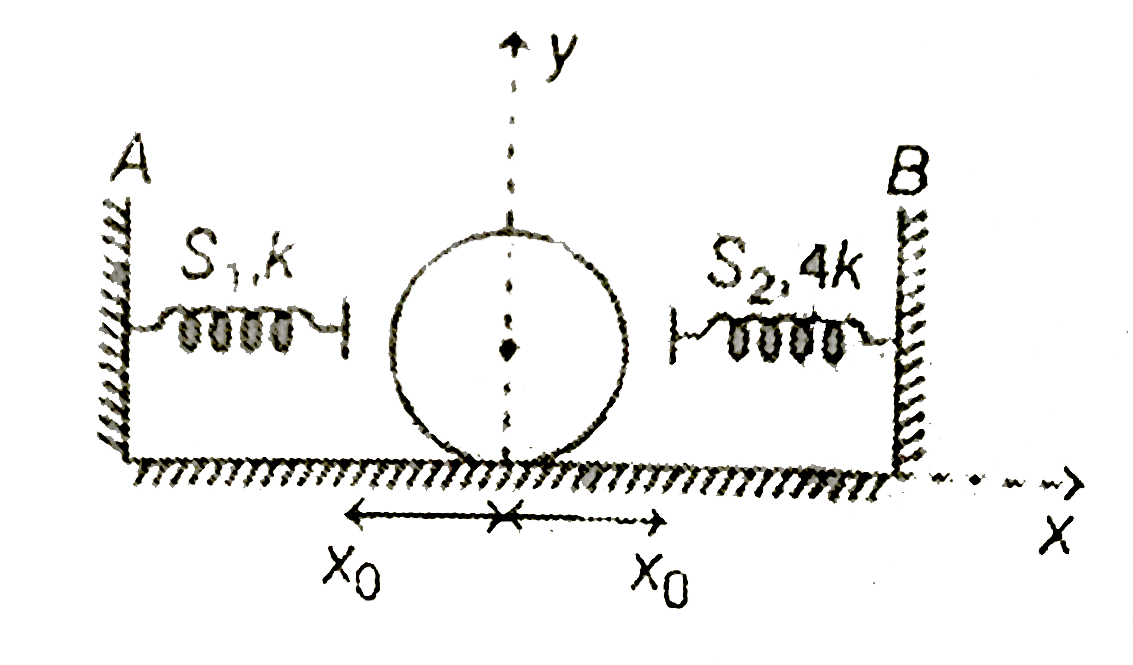
Case I : The cylinder is imparted speed `v_(0)` towards left. When the cylinder comes to rest momentarily the co-ordinates of its centre are either (`-x_(1), R)` or `(x_(2),R)` .
Case II: The Cylinder is imparted speed `v_(0)` toward left and angular speed `omega^(0)` in clockwise sense simultaneously . At the time of maximum compression in the springs the co-ordinates of centre of the cylinder are either `(-x_(3),R) " or "(x_(4),R)` Now answer the following questions assuming that friction is absent every where.
The value of `x_(3)` is
View SolutionA uniform solid cylinder of mass m and radius 2R rests on a horizontal table. A string attached to it passes over a pulley (disc) of mass m and radius R that is mounted on a fricitonaless axle through its centre . A block of mass m is suspended from the free end of the spring . The string does not slip over the pulley surface and the cylinder rolls without slipping on the table.
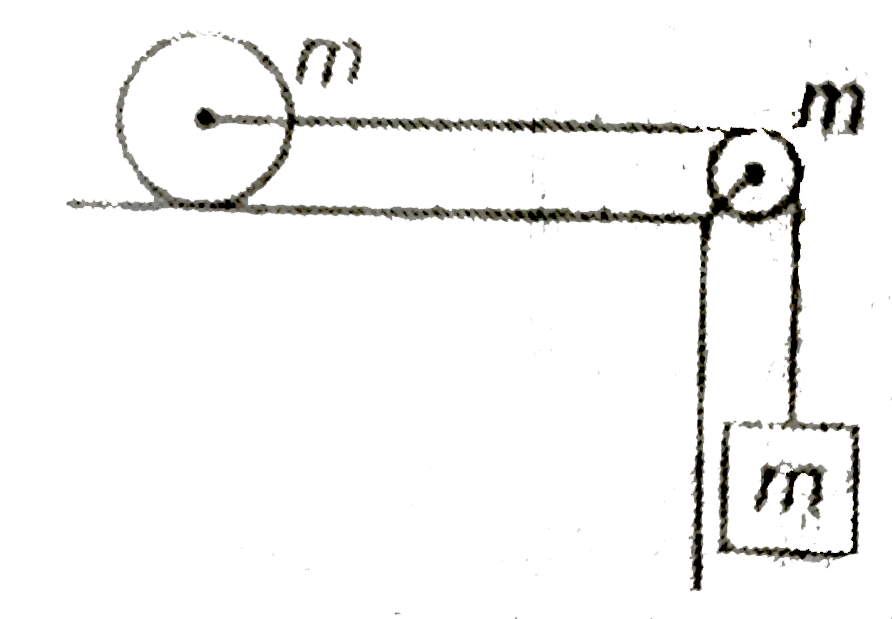
Acceleration of the block is
View SolutionA uniform solid cylinder of mass m and radius 2R rests on a horizontal table. A string attached to it passes over a pulley (disc) of mass m and radius R that is mounted on a fricitonaless axle through its centre . A block of mass m is suspended from the free end of the spring . The string does not slip over the pulley surface and the cylinder rolls without slipping on the table.

Force of friction acting on the cylinder is
View SolutionA uniform solid cylinder of mass m and radius 2R rests on a horizontal table. A string attached to it passes over a pulley (disc) of mass m and radius R that is mounted on a fricitonaless axle through its centre . A block of mass m is suspended from the free end of the spring . The string does not slip over the pulley surface and the cylinder rolls without slipping on the table.
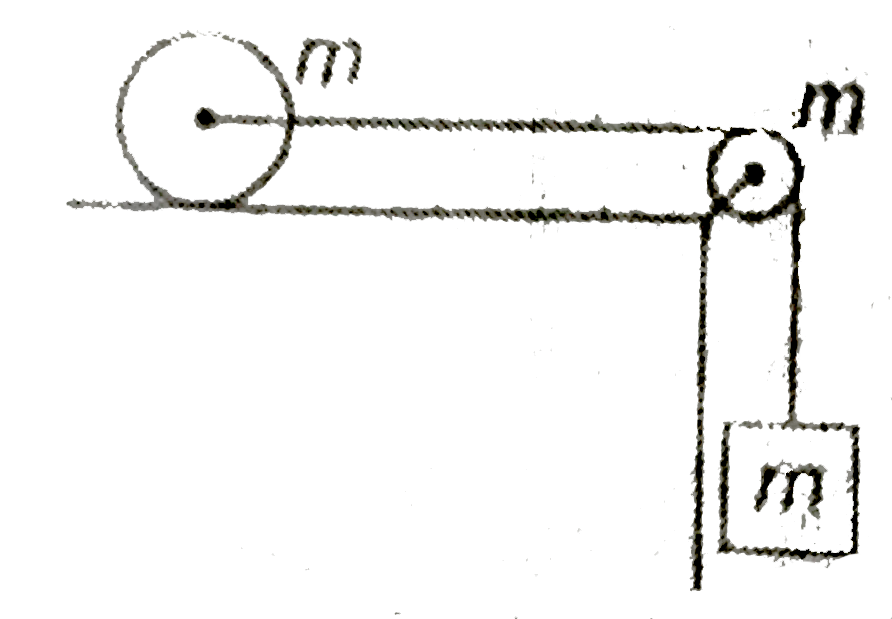
Angular acceleration of the cylinder is
View Solution
Comprehension Type Questions questions and complete solutions for chapter ROTATIONAL MOTION of DC PANDEY PHYSICS (HINGLISH) of Class 11